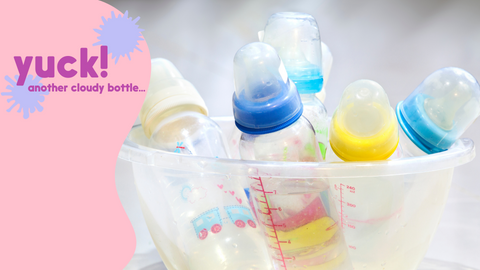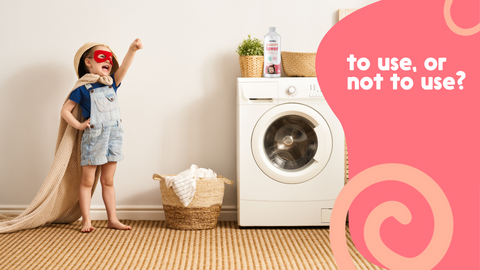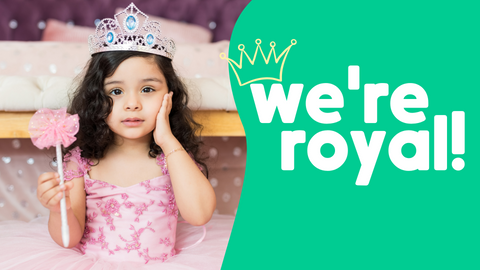We know the feeling of using something new for the first time. We bet you have this excitement bubbling inside to use the new baby bottles you bought for your little one. You love the way they look— shiny, smooth, and clear.
The first time you used it was so much fun. You took the bottles out of the box, removed the plastic cap, unscrewed the teat, rinsed the bottle, prepared the milk, and finally fed your little one! After the feed, you rinse and wash them straight away like an A student. The second time was a little less exciting. The third time it starts feeling like a chore.
And by the tenth time, you find it painful, especially when you start seeing the cloudy baby bottles waiting in the sink! Now you're asking yourself, "how did they become so cloudy when I wash them so well after each use?"
Cloudy Baby Bottles— How Do I Avoid Them?
Here are 3 reasons why you have cloudy baby bottles and what we can do to prevent this from happening.
1. Heat and Chemical Stress
Yes, it's not only us parents who crack under heat and stress, but even baby bottles do too! Putting boiling water in them, microwaving or washing them in high-temperature settings in a dishwasher introduces too much heat to plastic. The heat makes them go soft and disrupts the original arrangement of the plastic molecules designed by the manufacturers, which could eventually result in cloudy baby bottles. To make your bottles look new for longer, we recommend heating milk in a non-plastic cup or a bowl and then transferring it to the bottle after it cooled down a little.
For washing, we recommend using lukewarm water rather than hot. We'll explain better in the next section why less hot water is better for washing. Chemicals like SLES found in regular washing-up liquid could also introduce stress to the plastic, making them brittle over time. Best to use a cleaning product like Milk Buster that does not contain SLES but uses a plant-based cleaning ingredient to help prolong the life of your bottles.
2. Small Scratches
Most baby bottles nowadays are made of plastic. Whether it is BPA free or not, plastic is soft and can easily get scratched inside or outside the bottle. Bottle brushes can introduce small scratches causing cloudy bottles. Sadly once the bottles are marked, there is little that you can do to make them look new again. It is best to use gentle bottle brushes made of soft silicone and avoid brushes with stiff and sharp bristles, like our Magic Wand Bottle Brush
3. Milk Fat and Proteins
Fat and proteins from milk naturally love to cling to plastic. They have the perfect chemistry to attach, and this chemistry gets even stronger when the plastic has scratches. Plastic surfaces look smooth with the naked eye but not when you look at them under the microscope. They are full of imperfections, looking like roads with plenty of potholes.If the bottles are not washed well, you will have fat and proteins depositing in the tiny potholes, making your bottles cloudy over time. This damage gets even worse when the plastic has been exposed to scratching, heat or chemicals.
Why not try out Nimble's Milk Buster, which we designed to detach milk fat and proteins from plastic. And on the point of using lukewarm water for washing bottles, it also has something to do with proteins. Proteins unfold when exposed to heat, making them stickier and more challenging to remove from plastic. It's hard to tell the perfect washing temperature because it depends on the fat and protein content of the milk that you use, so it is best to experiment and see what works best











